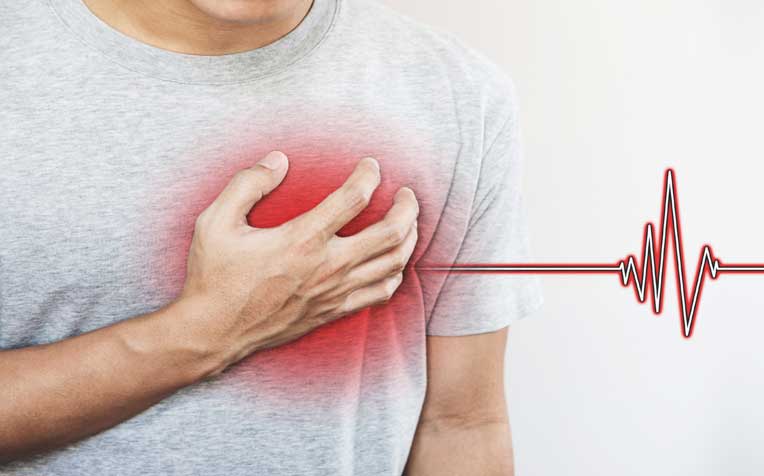
Acquired heart valve disease is a disease that is predominantly age-related.
What is acquired heart valve disease?
Acquired heart valve disease, a type of valvular heart disease, is acquired as a person gets older, and mostly affects people in their 60s to 80s. It happens when heart valves wear out, hardening and restricting blood flow in the heart.
According to Clinical Professor Yeo Khung Keong, Senior Consultant from the Department of Cardiology at National Heart Centre Singapore (NHCS), a member of the SingHealth group, it (acquired heart valve disease) is quite different from congenital heart valve disease, which is present from birth and can be hereditary.
Acquired heart valve disease takes a long time to show up, as the heart has the ability to work harder and compensate for the valves’ reduced efficiency.
Symptoms of acquired heart valve disease
Symptoms include:
- Shortness of breath,
- Tiredness,
- Chest pain,
- Fainting spells and
- Swelling in the legs
“Initially, patients may find walking okay, but running more difficult. They may take longer to walk to the market and experience difficulty in climbing stairs,” said Clin Prof Yeo.
Doctors can detect the condition when listening to the heart with a stethoscope.
“We can check for heart murmurs, but because murmurs can also occur in normal, healthy people, the definitive way to diagnose it is through echocardiography (ultrasound of the heart). It can tell us if the heart valve is opening and closing properly, and if it is calcified or damaged,” said Prof Yeo.
However, although it is a condition that is predominantly age-related, heart valves can wear out due to other causes such as infection, heart attacks and high blood pressure as well.
Acquired heart valve disease: Prevention and treatment

Treatment for aquired heart valve disease
The disease can be treated with surgery, but there are risks involved.
“Doctors use medicines to help the heart initially. When the disease gets too severe, they can do open-heart surgery but there are risks of heart attack, infection or stroke, and even death. So, we have to balance the need for treatment and the risk of complications,” said Clin Prof Yeo.
Surgical options include valve replacement using valve leaflets harvested from pig or cow tissue, and implanting metal or plastic valves in the heart. He added that, unfortunately, some types of acquired heart valve disease (e.g. aortic stenosis) are related to the natural progression of age.
“While we may be able to delay the onset of certain types of valvular disease, other types are more difficult to prevent,” Clin Prof Yeo said.
He said the risk of getting some types of acquired heart valve disease (e.g. mitral valve regurgitation) can be reduced by treating conditions such as diabetes and high blood pressure, and by not smoking, to prevent heart attacks.
It is also important to pay attention to diet, and exercise regularly. Practicing good dental hygiene can also help since bad teeth can cause a heart infection, which can lead to valve damage.
How heart valves work
The heart has four valves – the tricuspid, pulmonary, mitral, and aortic valves. They have tissue flaps that open and close as the heart beats. In doing so, they let blood flow in the right direction through the heart’s four chambers and to the rest of the body.
Two main problems can crop up in heart valves as we age: regurgitation or backflow, and stenosis.
- Regurgitation happens when the valve leaflets do not close completely, and blood flows back from the valve or leaks through the flaps. This makes the heart work harder to pump enough blood to meet the body’s metabolic needs.
- With stenosis, the valve flaps thicken, stiffen, or fuse together due to cholesterol and calcium deposits in the valve. They cannot open fully, so less blood flows through. As the valves are now tight, blood has problems travelling through or exiting the heart chambers.
In aortic valve stenosis, the blood dams or cannot move forward. The heart has to pump harder and eventually weakens, causing the left lower chamber, also known as the left ventricle, to swell and eventually fail. This affects the blood flow returning from the lungs, and patients will experience breathlessness from water building up in their lungs.
In cases when the mitral valve (the heart valve between the left upper and lower chambers) is leaking, the left lower chamber of the heart keeps pumping harder to cope with the leakage of blood.
“It’s like carrying a pail of water that’s leaking; the heart chamber keeps leaking and the leaking valve makes it take longer for the heart to fill,” explained Clin Prof Yeo. “So the heart will weaken and swell, and eventually fail.”
Ref: G25 (ed)















 Get it on Google Play
Get it on Google Play